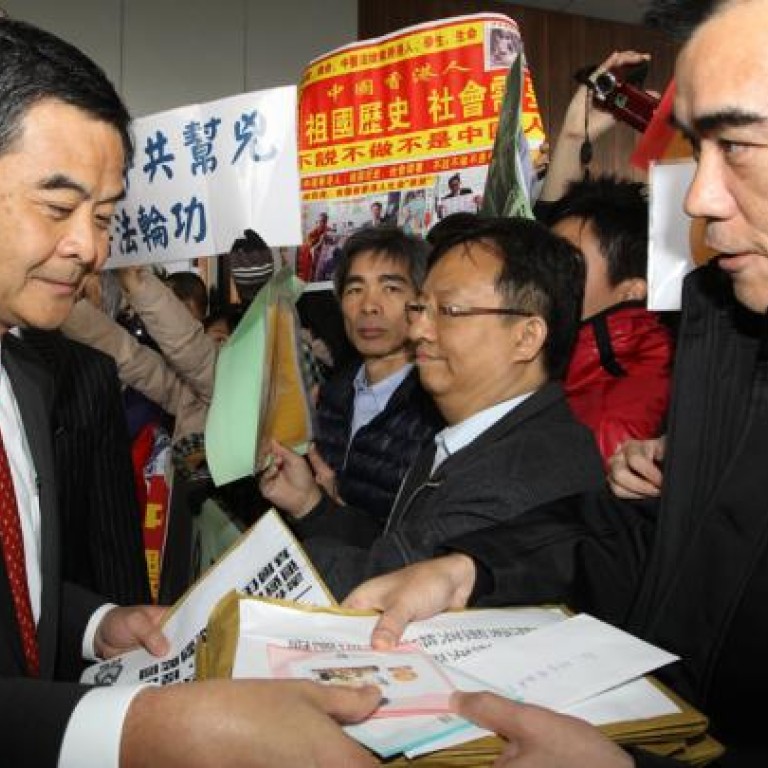
Leung Chun-ying should keep visits in public eye
The press and the protesters who make up chief executive's unofficial entourage go with the job
Over the past week or so, test balloons have been sent up around town regarding policies Chief Executive Leung Chun-ying is set to unveil in his maiden policy address on Wednesday.
Ensuring sufficient land supplies for affordable housing was one key theme flagged by many media "sources". And in an apparent effort at managing expectations, sources also downplayed the likelihood of another cash handout, saying that was just not Leung's style.
The policy address is a crucial moment for Leung to gain more public sympathy, if not support. He needs positive feedback. So it was no surprise that during a Government House cocktail party to celebrate the new year, Leung urged guests to voice their views more vigorously - there were more than 100 invited "representatives" from various sectors and many would have been labelled "Leung fans".
The chief executive claimed that there was a gap between public opinion and media opinion. He felt his support was much greater than the media reflected. It was a controversial claim, but a conclusion that Leung appears to have come to as a result of meeting people directly and quietly, without telling the media.
Before Christmas, Leung's office announced he would be away on holiday from December 25 to 30. Leung then revealed in his blog that he went to a government shelter to visit the homeless on Christmas Eve. Reporters only found out when they read the blog.
Three days later, Leung's deputy, Chief Secretary Carrie Lam Cheng Yuet-ngor, visited two hard-up families in Sham Shui Po. This was only revealed the next day when pictures were posted on the website of the Commission on Poverty, of which she is the chairwoman.
There is a Chinese term describing this type of private visit: to inspect incognito. It dates back to when the emperors of ancient China would travel in disguise in order to feel the pulse of the people and try to get a true picture of the country. It was regarded as an act of virtue.
Yet in the case of Leung or Lam, neither could have intended to avoid media coverage - otherwise they would not have posted their thoughts and pictures on the web.
Reasons given for the lack of fanfare ahead of the visit were that too many reporters could be intrusive and stifle conversation and, also, that the exercises might then be seen as mere political shows.
Sounds reasonable … but having no press around also means no sensitive or embarrassing questions get asked, and by deciding not to make the schedule public, it meant no protesters were around either.
Leaders' activities are not supposed to be a secret. In an open society like Hong Kong's they should be made known to the public. The idea protesters would want to storm in on a poor family in a subdivided flat is unlikely. And whether the activities are newsworthy is up to the press to decide. The media can be very critical and reporters may ask aggressive questions, but that's only natural.

